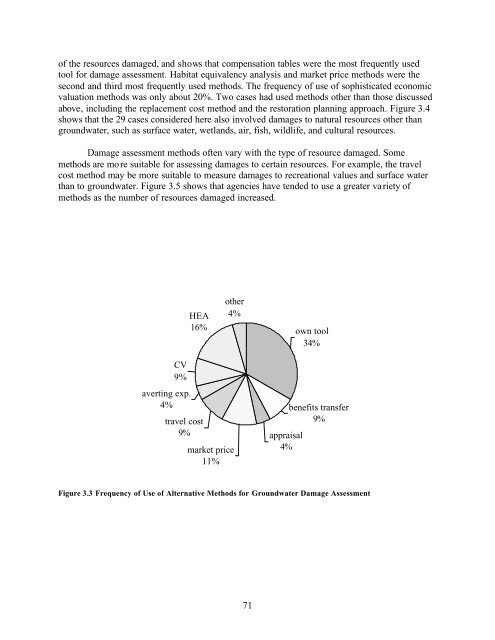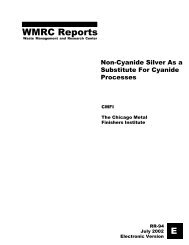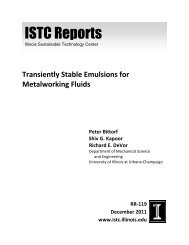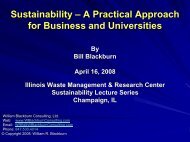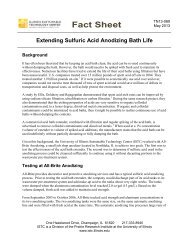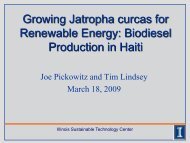Natural Resource Damage Assessment: Methods and Cases
Natural Resource Damage Assessment: Methods and Cases
Natural Resource Damage Assessment: Methods and Cases
You also want an ePaper? Increase the reach of your titles
YUMPU automatically turns print PDFs into web optimized ePapers that Google loves.
of the resources damaged, <strong>and</strong> shows that compensation tables were the most frequently used<br />
tool for damage assessment. Habitat equivalency analysis <strong>and</strong> market price methods were the<br />
second <strong>and</strong> third most frequently used methods. The frequency of use of sophisticated economic<br />
valuation methods was only about 20%. Two cases had used methods other than those discussed<br />
above, including the replacement cost method <strong>and</strong> the restoration planning approach. Figure 3.4<br />
shows that the 29 cases considered here also involved damages to natural resources other than<br />
groundwater, such as surface water, wetl<strong>and</strong>s, air, fish, wildlife, <strong>and</strong> cultural resources.<br />
<strong>Damage</strong> assessment methods often vary with the type of resource damaged. Some<br />
methods are more suitable for assessing damages to certain resources. For example, the travel<br />
cost method may be more suitable to measure damages to recreational values <strong>and</strong> surface water<br />
than to groundwater. Figure 3.5 shows that agencies have tended to use a greater variety of<br />
methods as the number of resources damaged increased.<br />
CV<br />
9%<br />
averting exp.<br />
4%<br />
HEA<br />
16%<br />
travel cost<br />
9%<br />
market price<br />
11%<br />
other<br />
4%<br />
71<br />
appraisal<br />
4%<br />
own tool<br />
34%<br />
benefits transfer<br />
9%<br />
Figure 3.3 Frequency of Use of Alternative <strong>Methods</strong> for Groundwater <strong>Damage</strong> <strong>Assessment</strong>


